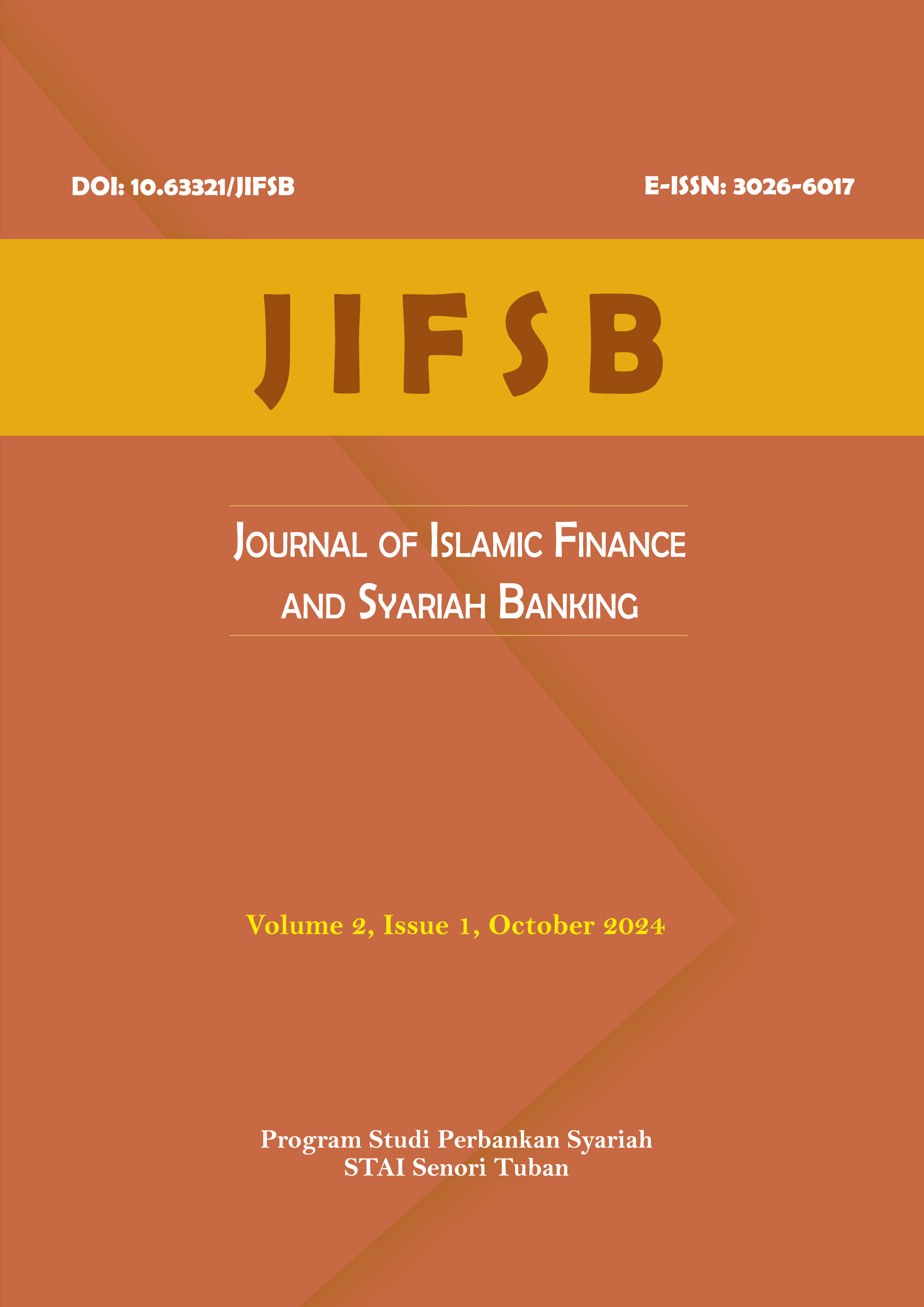Manajemen Operasional Masjid Namira Lamongan sebagai Aset Wakaf
DOI:
https://doi.org/10.63321/jifsb.v2i1.53Keywords:
Operational Management, Assets, EndowmentsAbstract
The research entitled "Operational Management of the Namira Lamongan Mosque as a Waqf Asset" is the result of qualitative research that aims to answer the question of how Naẓir's strategy in operational management is implemented at the Namira Mosque as a waqf asset in the form of a mosque to make the mosque prosperous. and what impact the implementation of operational management will have on the congregation and community. The research results show that the naẓir strategy in operational management implemented by the taker of the Namira Mosque is modern mosque operational management which is implemented through three areas, namely Idarah, Imarah, and Ri'yah. Idarah is the function of mosque management, which is related to all mosque operational activities. Imarah is the function of prospering the mosque as the function of the mosque is the function of worship, and Ri'yah is the function of maintaining the mosque's assets. Namira Mosque is one of the mosques that has various programs for its congregation, guaranteed cleanliness, and good facilities, thereby increasing comfort in worship. Therefore, the Namira Mosque is always busy with visitors, of course, this cannot be separated from how the mosque takmir manages the assets of the Namira Mosque so that the benefits can be felt by the congregation directly. The impact of implementing the Nazir strategy in operational management can be felt directly by the congregation through the various facilities and programs available at the Namira Mosque. The suggestion for future researchers is to research more deeply regarding the operational management of waqf assets, especially waqf assets in the form of mosques. Because many mosques still have waqf status but do not have a modern mosque management system for managing their waqf assets, the function of the mosque cannot be carried out optimally.
Downloads
References
Akbar, M. A., Tau, M. R., & Cuandra, F. (t.t.). Analisis Manajemen Operasional Pada Pt National Industrial Gases Indonesia.
Anshori, I. (2018). Peran Dan Manfaat Wakaf Dalam Pengembangan Pendidikan Islam. 3(1).
Aulya Rachma Damayanti, Silvia Aluf, Nazwa Abidin Yunus, Muhammad Faiz Ferdi Rahman, Danendra Sakhi Rukmana, & Yayat Suhayat. (2023). Konsep Wakaf dalam Ilmu Manajemen. Journal of Creative Student Research, 1(4), 01–21. https://doi.org/10.55606/jcsrpolitama.v1i4.2211
Batubara, D. (2021). Potensi Dan Paradigma Nazir Terhadap Aset Wakaf Tanah Di Kabupaten Tapanuli Selatan. Journal of Islamic Social Finance Management, 1(2), 280–292. https://doi.org/10.24952/jisfim.v1i2.3588
Dewan Masjid Indonesia. (2003). Buku panduan praktis manaemen pengelolaan masjid edisi pertama. PW DMI.
Fauzan Almanshur, M. D. G. (2017). Metodologi Penelitian Kualitatif (hlm. 13). Ar-Ruzz Media.
Fitri Lukiastuti, H. P. (2009). Manajemen Operasional (hlm. 2). Medpress.
Haq, F. (2014). Hukum perwakafan di indonesia. Dwi Pustaka.
Hidayat, A. R., Hakim, R. F., Azma Zainul Taufiqulloh, & Syarifah, S. (2023). Manajemen Wakaf Dalam Perspektif Hukum Islam Dan Undang-Undang No. 41 Tahun 2004. Filantropi : Jurnal Manajemen Zakat dan Wakaf, 4(1), 14–26. https://doi.org/10.22515/finalmazawa.v4i1.8029
Ilyas, M. (2017). Profesional Nazhir Wakaf dalam Pemberdayaan Ekonomi. Jurnal Al-Qadau: Peradilan dan Hukum Keluarga Islam, 4(1), 71. https://doi.org/10.24252/al-qadau.v4i1.5719
Karyoto. (2015). Dasar-Dasar Manajemen, Teori, Definisi dan Konsep (hlm. 1). Penerbit Andi.
Kasdi, A. (2012). Model Pengelolaan Wakaf Produktif Untuk Pengembangan Pendidikan di Universitas Al-Azhar. UIN Walisongo Semarang.
Kasdi, A. (2015). Reinterpretasi Konsep Wakaf Menuju Pengembangan Wakaf Produktif. 2(1).
Khosyi’ah, S. (2010). Wakaf & Hibah Perspektif Ulama Fiqh dan Perkembangannya di Indonesia (hlm. 26). Pustaka Setia.
Lubis, S. K. (2010). Wakaf dan Pemberdayaan Umat (hlm. 162). Sinar Grafika.
Maulana Ira. (2022). Menakar Strategi Nazhir Dalam Pengembangan Wakaf Produktif Di Kecamatan Langsa Timur Kota Langsa. Formosa Journal of Science and Technology, 1(2). https://doi.org/10.55927/fjst.v1i2.700
S Praja, J., & Muzarie Mukhlisin. (2009). Pranata Ekonomi Islam Wakaf (hlm. 12). STAICPRESS.
Syahputra, A. (2019). Perlindungan Atas Eksistensi Masjid Dana Tanah Wakaf. CV. MANHAJI.
Tim Redaksi Fokus Media. (2005). Kompilasi Hukum Islam. Fokus Media.
Wibowo, S. (t.t.). Pengantar Manajemen Bisnis Introduction To Business Manajement. Telkom Politechnic.
Zuki, M. S. Md. (2012). Waqf and its Role In Socio-Economic Development. ISRA International Journal of Islamic Finance, 4(2), 173–178. https://doi.org/10.12816/0002755
Downloads
Published
Issue
Section
License
Copyright (c) 2024 Izzatul Ilmiyah, Badaruz Zaman

This work is licensed under a Creative Commons Attribution-NonCommercial 4.0 International License.



